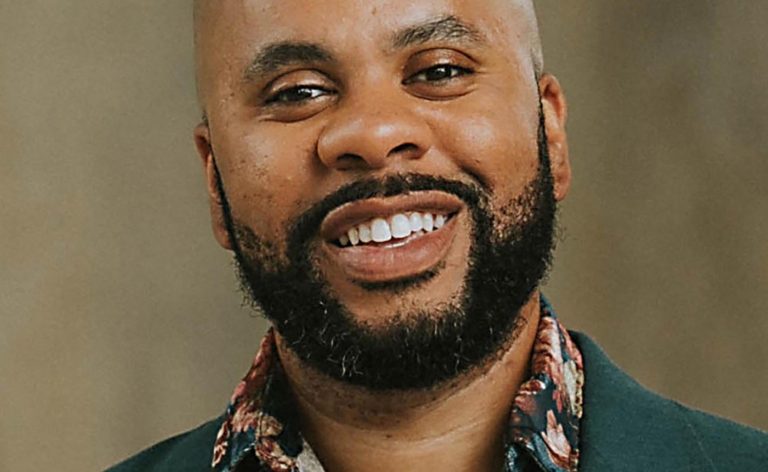The Hotline mailbag publishes weekly. Send questions to wilnerhotline@bayareanewsgroup.com and include ‘mailbag’ in the subject line. Or hit me on Twitter/X: @WilnerHotline
Please note: Some questions have been edited for clarity and brevity.
In two years, is San Diego State in the same conference as Oregon State and Washington State? — @AztecAlum
Were the Hotline offering probabilities on realignment scenarios, SDSU pairing with the Beavers and Cougars starting in the summer of 2026 would fall on the high side of 50 percent. The very high side.
It’s a near-certainty and could come in one of several forms:
— Oregon State and Washington State join the Mountain West.
— The Aztecs join a rebuilt Pac-12 with some or all of the Mountain West schools.
— All three join the ACC to expand its western footprint. (This outcome has a 0.001 percent chance of materializing, and would require Florida State and Clemson to exit the ACC, along with North Carolina, in the next nine-to-12 months.)
Not that you asked, but here’s one more layer to consider: I would include Boise State and make it a quartet.
To be clear, this is merely opinion. But the Hotline does not believe the Aztecs and Broncos have any interest in signing up for another media rights cycle with the same collection of Mountain West schools.
The conference’s agreement with Fox and CBS expires in the summer of 2026, which coincides with the expiration of the NCAA’s two-year grace period that allows WSU and OSU to compete as a two-team conference.
The coterminous events add complexity to the strategic calculations for each conference and the member schools. But everyone knows exactly when the bell tolls.
What makes us confident SDSU and Boise State want to change their peer group?
Because fundamentally, the Mountain West is just like the ACC and the Big Ten: It has football programs with above-average media value and football programs with below-average media value.
Granted, the average is much lower in the Mountain West. But on a relative basis, the situation is exactly the same. The schools at the top of the valuation range, San Diego State and Boise State are worth substantially more than the schools at the bottom of the valuation range, like Hawaii, Nevada and Utah State.
Just as Ohio State is subsidizing Purdue in the Big Ten’s media deal and Florida State is subsidizing Syracuse in the ACC’s contract, so, too, are SDSU and Boise State subsidizing schools in the Mountain West.
And just a hunch: They have no intention of signing up for more of the same when 2026 rolls around.
Which means:
— Either they stay in the Mountain West (with WSU and OSU as new members) and the top schools insist on unequal shares of media rights revenue.
— Or they leave the conference and join a rebuilt Pac-12 with eight or 10 schools that have media valuations well above the current and future Mountain West averages.
Put another way: A conference consisting of Washington State, Oregon State, Boise State, San Diego State, Fresno State, UNLV, Air Force and at least one more school — but no more than three — would generate more media value than the Mountain West if the current collection of schools signed a new deal together.
(Which networks might be interested? Fox and CBS, of course, and perhaps The CW, as well.)
Exactly how SDSU and Boise State might extricate themselves from the Mountain West remains to be seen, for financial penalties are lined up like planes on a crowded runway — penalties that could cost the two schools and the Pac-12 more than $50 million (in total).
The operative word: could.
Because when it comes to realignment, billable hours are undefeated. The Aztecs and Broncos assuredly have legal strategies in place that would form the basis of any departure negotiations with the Mountain West.
Whether they avoid paying certain penalties altogether or merely hammer the amounts to manageable levels is anyone’s guess.
But if SDSU and Boise State (and others) opt to leave the Mountain West behind in two years, the smart money is on them paying less money than the contracts require.
What’s the future of the kickoff game in Las Vegas? It looked like an incredible environment, but nothing is booked for next year and beyond. Is this just going to be an annual USC “home game”? Or will it rotate around West Coast teams? — @WorkishFromHome
As you noted, there is nothing scheduled for future seasons (at least nothing that has been made public). But the success of the event Sunday night, especially the 9.2 million viewers who tuned in, should motivate the Big Ten and SEC — along with ESPN/ABC and Fox — to create an annual showdown on the Sunday of Labor Day weekend.
Logistics are an issue. They are always an issue for coaches with regard to Sunday games (because of the short preparation time available for the ensuing week).
There’s a more significant hurdle lurking, however: the College Football Playoff.
Athletic directors and coaches across the country plan to closely track the selection and seeding for the inaugural year of the 12-team event: How much weight will the committee give to strength-of-schedule compared to won-loss record?
If the former is prioritized, we could very well see more games like USC-LSU.
If the committee favors teams with the fewest losses — a defining aspect of the selection process in the four-team era — then the blue bloods will think twice before signing up for marquee early-season games in Las Vegas, Atlanta or Arlington.
If Washington State and Oregon State should just happen to join the Big 12, for example, in 2025 and “abandon” the Pac-12 entity, would they forfeit a) the $65 million that has been withheld in campus distributions and/or b) the $150 million anticipated from the Pac-12’s postseason football and basketball contracts? — James V.
From a practical standpoint, this topic is moot. The Cougars and Beavers are not joining the Big 12, or the ACC, for the 2025-26 competition year.
But the question touches on an important issue: The fate of the Pac-12’s assets starting in the summer of 2026, when the two-year grace period expires and the conference must be rebuilt or dissolved.
If Washington State and Oregon State rebuild the conference, they would retain all the assets, which total approximately $250 million.
If they shutter the conference as a legal entity, the NCAA Tournament revenue accrued through the spring of 2024 would be paid out to the schools that earned the units.
That includes Oregon State, which collected four units in the 2021 event, and WSU, which earned two units last spring.
(The units are worth roughly $335,000 annually over the payout period. Our back-of-the-envelope math suggests $30 million would be available to the scattered schools in the final years of the decade.)
The $65 million in withheld distributions and the $100 million due from the Rose Bowl would, in theory, have been spent by the Cougars and Beavers for athletic department operations by the summer of 2026.
Has former Pac-12 commissioner Larry Scott paid back his housing loan? — @RockDawg3
Scott received a $1.8 million relocation loan from the conference many years ago. It was due on June 30, 2024. I haven’t confirmed repayment, but we’ll have an answer next spring when the conference releases its tax filings for the 2024 fiscal year.
Although Pac-12 presidents were quite generous with Scott’s contract and spending habits during his 12 years in charge, it’s difficult to believe — especially in the current climate — that WSU’s Kirk Schulz and OSU’s Jayathi Murthy were willing to forgive the loan.
How many subscriptions has Comcast lost this week to signups for YouTube, Fubo, Hulu, Sling, etc.? — @RealWebTraveler
I don’t have a number, but I have an answer. And that answer is: Not enough.
Comcast had a straightforward calculation when faced with Fox’s request to move the Big Ten Network from a sports tier to a basic tier when the West Coast schools joined the conference:
Agree to the higher subscription price that comes with the basic tier — an expense that gets passed on to customers, whether they want the Big Ten Network or not — or resist Fox’s request and endure the consequences.
Those consequences, of course, were the blackout of BTN events involving the four new schools.
The Oregon and Washington season openers were blacked out on the West Coast last weekend, and barring a resolution in the next 24 hours, the USC and Washington games will suffer the same fate on Saturday.
Clearly, Comcast felt the pain of losing subscribers who want the BTN was worth the gain of sticking up for subscribers who don’t. Otherwise, the company would have caved at the last minute.
Obviously, the entire reason the Big Ten poached USC and UCLA in the first place was to capture the Los Angeles TV market. How could they have not cleared the Big Ten carriage issue by now? — @DonLoving18
It’s not unreasonable to think Fox misplayed the situation and should have recognized earlier that Comcast was prepared to dig in.
That said, there is likely more to the situation than the location and cost of the Big Ten Network on Comcast systems along the West Coast, especially considering that Comcast owns NBC, which is paying roughly $300 million annually to broadcast Big Ten games. (It’s essentially a Big Ten business partner.) The company probably wants distribution leverage with Fox elsewhere in the ecosystem.
The Hotline is less focused on the origins of the dispute and more interested in the timing of a resolution.
And at this point, there is no end in sight.
Fox can’t offer Comcast a lower rate for the Big Ten Network, because it would be forced to offer the same rate to other distributors (per the contract terms) and the revenue model at the heart of West Coast expansion would collapse.
And Comcast probably believes the majority of defections to other distributors (Hulu, YouTube, etc.) have already occurred.
Remember, Comcast doesn’t have the same presence in Southern California that it does in the Pacific Northwest, so upcoming defections related to (likely) USC and UCLA blackouts could be limited.
What is the minimum that Washington State and Oregon State must do this football season to be relevant in conference realignment talks? Is a berth in the Alamo Bowl good enough? Or is a playoff spot necessary? –@CelestialMosh
They certainly don’t need to qualify for the College Football Playoff, which is an unrealistic standard considering they do not have access to automatic bids and must take the at-large route.
The first step toward season-long relevance comes next weekend, with the rivalry games. The Cougars and Beavers don’t necessarily need to win the Apple Cup and Civil War, respectively. But they must be competitive. They must look like they belong on the field with Big Ten opponents.
Bowl bids are crucial for both teams — the minimum bar for relevance.
Even better: winning seasons and an appearance of two in the AP poll.
In some ways, there are more eyes on WSU and OSU than ever before. And because of the media rights deal with The CW, they should be easy to find. It’s the best scenario they could have hoped for under the circumstances.
It’s all about winning — not necessarily at the highest level but certainly at a respectable level.
Would you rather fight 100 duck-sized Dan Lannings or one Matayo Uiagalelei-sized duck? — @NILvsNLI
To be clear, I’d prefer to fight one duck-sized duck.
But if that’s not an option, I would take my chances with 100 duck-sized Lannings, wear a purple and gold uniform, take the fight into the fourth quarter and hope for the best.
*** Send suggestions, comments and tips (confidentiality guaranteed) to wilnerhotline@bayareanewsgroup.com or call 408-920-5716
*** Follow me on Twitter/X: @WilnerHotline












